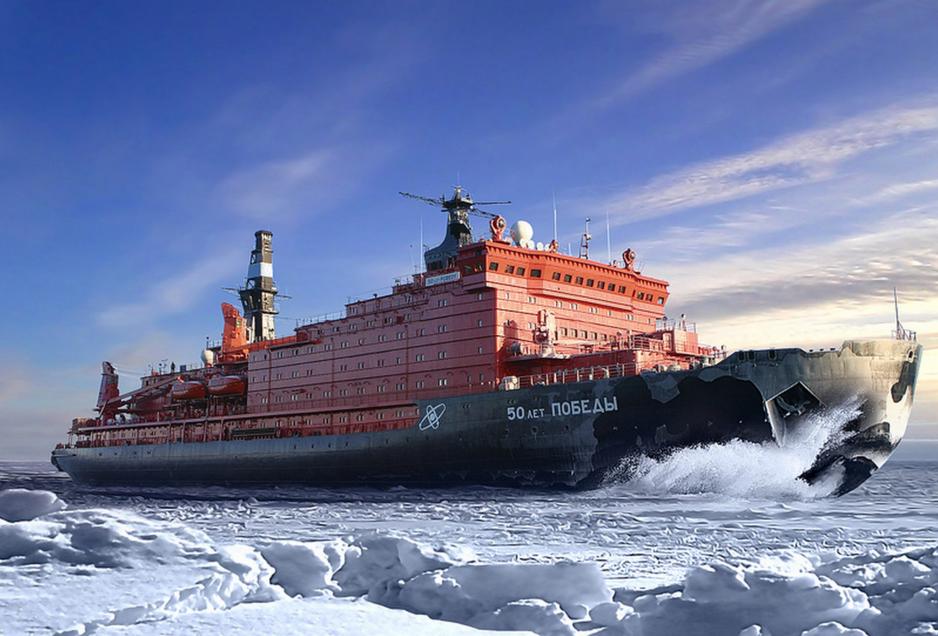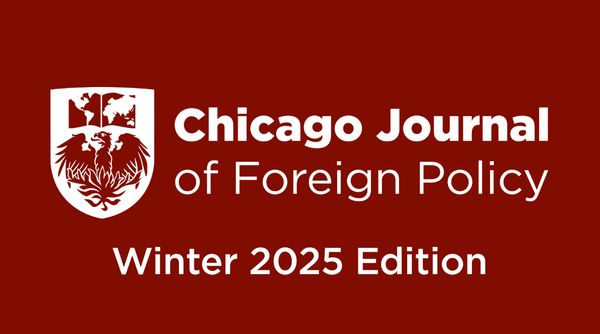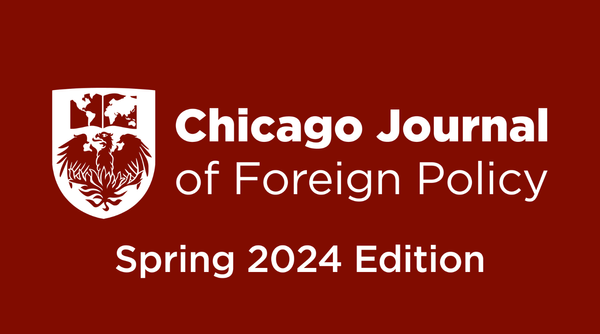Freezing Hot: Escalating Tensions in the Arctic

by SARAH McKELLAR, American University ’19
The Council on Foreign Relations Independent Task Force Report, Arctic Imperatives: Reinforcing U.S. Strategy on America’s Fourth Coast, stated, “The United States, through Alaska, is a significant Arctic nation with strategic, economic, and scientific interests.”[1] For a significant amount of time, the U.S. government has put the Arctic region on the backburner of the foreign policy agenda. While giving a speech about security matters, Senator Dan Sullivan of Alaska was asked what the national security strategy was in the Arctic. His response was, “Well I think until recently, from the U.S. perspective, from the [Pentagon] perspective, it really hasn’t existed.”[2] Moreover, Jim Townsend, a former top Pentagon’s Europe and NATO official, said “the Arctic didn’t fit comfortably into the bureaucratic structure of Washington’s policy making machine. Within the Pentagon the Arctic as an issue…is a bit of an orphan.”[3] Scholars are starting to turn their attention to the Arctic as the next security prioritization. If the United States fails to elevate the importance of the Arctic in its foreign policy agenda in this administration, it is bound to wreak havoc on the planet environmentally, will lessen its economic opportunities, and shall weaken U.S. strategic standing in this emerging region.
The Arctic Council
The Arctic Council is an intergovernmental forum that pertains to concerns and issues in the Arctic Circle. The Council seeks to “promote cooperation, coordination and interaction among the Arctic States, Arctic indigenous communities and other Arctic inhabitants on common Arctic issues, in particular on issues of sustainable development and environmental protection in the Arctic.”[4] There are currently eight members of the Council, all which have territories that fall in the Arctic Circle: the United States, Canada, the Russian Federation, Norway, Sweden, Finland, Iceland, Denmark.[5] Furthermore, there are twelve countries that have been granted Observer status on the Council, including countries like China, France, the United Kingdom, and India, which all seek to either open trade routes or have strategic interests in the Arctic.[6]
Additionally, there are numerous non-governmental organizations that have been granted Observer status, and the European Union is currently pending observer status.[7] The working work is being executed by the Arctic Council to protect, preserve, and cooperate on numerous biodiversity, security, and environmental concerns.[8] It is interesting to note that the Arctic Council does not concern itself with military security, as the focus is centered around environmental and scientific policy in the Arctic. The Arctic Council has done much in the region to promote cooperation between states, economic and trade growth, and environmental sustainability and protection.
Global Warming in the Arctic
One of the most important aspects of security that many believe will be the crux of multilateral cooperation in the Arctic is climate change. A 2015 survey conducted by NASA concluded that Arctic amplification was occurring, which means that the Arctic is warming faster than the rest of the Northern Hemisphere due to disappearing sea ice.[9] The Arctic is warming at approximately two times faster than the rest of the planet.[10] This will not just affect the penguins and polar bears, but will start to impact coastal cities further south in the Hemisphere.
Our world has already seen some of the irreversible effects of global warming. Rises in overall temperature, an increase in extreme weather patterns, and the rise in the sea level are all direct results of human-created problems in our environment. The Greenland ice sheet, the second largest behind Antarctica, contains enough ice that if it were to completely melt, it would raise average global sea level by about 23 feet.[11] Additionally, the rising sea levels will continue jeopardize the livelihoods of millions globally and exacerbate economic and security risks that the United States already faces. In Alaska alone, some of the structures built on permafrost are sagging, and coastlines are continuing to erode.[12] This creates a problem with greenhouse gases, since the release of methane and carbon dioxide stored in permafrost could rapidly increase the spread and severity of global warming. The rising sea levels and erratic weather patterns are endangering coastal communities in all Arctic nations.[13] Members of the Inuit and other native communities, many of whom do not have clean drinking water and adequate plumbing infrastructure have found their traditional lifestyles disrupted. In some cases, some towns will need to relocate to non-coastal areas. There also needs to be an increase in support for Alaskan infrastructure, as there is almost no functioning infrastructure in place within the U.S. maritime Arctic. Without it, the U.S. will lose its sense of security and power in the Arctic region.
Furthermore, the likelihood of displaced people becoming migrants due to climate change is incredibly high. If people are forced to leave their place of living because of sea levels or temperature, they are a refugee from climate change. However, as stated by Stewart M. Patrick, the senior fellow and director of the program on International Institutions and Global Governance at the Council on Foreign Relations, wrote:
“Trump’s recent budget proposal would reduce spending on the Coast Guard by a whopping $1.3 billion, crippling the service’s ability to secure U.S. maritime borders, much less correct the current shortfall in ice-breakers and cutters. The budget similarly calls for draconian cuts to the Environmental Protection Agency, the science and research offices in the Department of Energy, and the National Oceanic Atmospheric Administration—steps that would undercut U.S. leadership in understanding and combating climate change and diminish the U.S. ability to advance sovereign interests in the region.”[14]
Patrick’s stern words ring loud and clear: if the current administration does not act on climate change, in the Arctic, drastic effects will affect millions around the globe. If steps are not taken in the Arctic, and to a wider extent, the rest of the world, geography and history will be rewritten by the disappearance of land masses.
Economic and Energy Concerns
Conversely, the effects of climate change in the Arctic do not all have negative consequences. According to the United States Geological Survey, the Arctic has 13% of the world’s undiscovered oil and 30% of its gas.[15] The decreases in ice and permafrost creates many opportunities to tap the Arctic’s wealth of natural resources, mainly the oil and gas spoken of above. Secondly, with the decreasing presence of ice, more trade routes would open particularly in the northeastern and northwestern Arctic routes.[16]This would mean new shipping lanes opening and the potential for increased tourism to the region.[17]
The potential for additional sea routes for shipping and commercial activity has increased interest in involvement in the Arctic. Countries such as China and Russia are eager for emerging economic opportunities and are investing millions of dollars in the region as the United States falls behind.[18] Recently, Russia unveiled “a new Arctic command, four new Arctic brigade combat teams, 14 new operational airfields, 16 deep-water ports, and 40 icebreakers with an additional 11 in development. The United States has one working icebreaker for the Arctic—it’s only other one is broken.”[19] The U.S. is falling behind other countries with a vested interest in the Arctic economically. At a minimum, if the U.S. wants to be in the forefront of Arctic exploration, the building of the Arctic economy and preserve its regional influence, it needs to update its current ice-breaker and infrastructure capabilities.
Maritime and Border Security
An issue relevant to the U.S.-Arctic relations is that the United States has yet to ratify the United Nations Convention on the Law of the Seas, which “defines the rights and responsibilities of nations with respect to their use of the world’s oceans, establishing guidelines for businesses, the environment, and the management of marine natural resources.”[20] If the US does not ratify the Convention on the Seas, it cannot, “legally exploit the vast oil and gas resources on the U.S. extended continental shelf, mine minerals in seabed, or lay and service submarine telecommunication cables.”[21] All of these issues impact both the environmental and economic concerns in the Arctic. Moreover, Stewart Patrick expressed that:
“Being party to UNCLOS would strengthen the U.S. hand in settling disputes in the South and East China Seas. The United States has called for China to respect global maritime norms and to comply with an international tribunal’s ruling against Beijing’s claims in the South China Sea, but if it remains an outsider, its message rings hollow.”[22]
If the U.S. does not ratify this treaty, it will have no legal protection for its sea resources, and could potentially face more scrutiny and conflict with Asian countries for having a double standard with its response to disputes in the South China Sea.
The Arctic: A Zone of Cooperation or Competition?
The United States and the Russian Federation have had a “chilly” relationship since the end of the second World War, and their security interests in the Arctic have proven to be no different. Russia has recently re-opened numerous military bases in the Arctic and they now possess more advanced ice-breaker capabilities to better facilitate their exploration of the Arctic region. Luke Coffey, a Fellow at the Heritage Foundation, believes that it is vital that the U.S. continue its strong relations with Canada and NATO to influence a positive role in the Arctic region.[23]
Many scholars and state officials believe that the Arctic Council helps to create stability although there may be other potential security conflicts among its member states. Norwegian Admiral Haakon Bruun Hanssen says that the Arctic is, “probably the most stable area in the world.”[24] The United Nations Law of the Sea, for example, has “put almost all un-prospected oil, gas and minerals under national jurisdictions, narrowing the scope for dispute.”[25] The Arctic Council is a forum where all voices get an equal say, and cooperation is held in high regards. The Council is an excellent tool for diplomacy that can help enhance our relationship with Russia and make it one of civil diplomacy and friendly competition, not conflict-riddled and tense.
Policy Recommendations
The six primary goals of Arctic policy are to ratify the United Nations Convention on the Law of the Sea, to fund and maintain polar ice-breaking ships, to improve Arctic infrastructure, to strengthen cooperation with other Arctic nations, particularly Russia, to support sustainable development and Alaska Native communities, and to fund scientific research.
As stated earlier, the Convention on the Law of the Sea gives legal rights and helps to secure maritime borders. In this, the U.S. will not face legal charges for any exploration of resources it may pursue. Also, ratifying the treaty may give us a stronger rapport with China and can promote cooperation within Southeast Asia. Secondly, the funding of new ice-breakers will help to create more paths for trade and tourism in the Arctic. This could potentially make it a more sustainable and hospitable environment with economic growth. In turn, it will also allow the Coast Guard to increase their infrastructure in the region and patrol our borders.
Furthermore, strengthening our relationship with Russia by building trust and respect is crucial. If we can cooperate with them in the Arctic, perhaps in time we can extend our cooperation to other conflicts in which we are not currently allied. It is also important to support sustainable development and Alaska Native communities so that they can sustain themselves and promote growth in their traditional way of life. Lastly, funding scientific research is of the utmost importance, especially looking at the effects of climate change. If the U.S heeds these initiatives, we will secure our influence in the Arctic and create the potential for multilateral cooperation.
Conclusion
While the Arctic is not a region typically prioritized, it needs to be elevated in significance, especially in this administration. President Trump needs to take a stronger position on policymaking in the Arctic, especially now since the U.S. will no longer chair the Arctic Council. Many of Trump’s domestic initiatives diverge from the policies that should be undertaken in the Arctic regarding climate change should be considered strongly. If the Arctic’s sea levels continue to rise, Trump could have a national security crisis on his hands: climate change refugees and displaced people all around the country’s coasts. Furthermore, it is within the United States national interest to promote trade and economic growth and we should equip ourselves with the most advanced ice-breakers to continue the flow of goods and services in the Arctic. The Arctic Council also assists in promoting cooperation with other Arctic nations, mainly Russia. It is within the U.S. national interest to cooperate with Russia as they have been our rival superpower for almost seventy years. If the U.S. makes the Arctic a national security priority and undertakes the policies dictated above, the United States will be greeted with a safer climate, cooperation, and prosperity.
Works Cited
[1]Thad W. Allen et al., “Arctic Imperative: Reinforcing U.S. Strategy on America’s Fourth Coast,” Council on Foreign Relations, March 2017, accessed April 19, 2017, http://www.cfr.org/arctic/arctic-imperatives/p38868?cid=nlc-news_release-news_release–link2-20170322&sp_mid=53680231&sp_rid=c3NoZWx0b25jb2xieUBnbWFpbC5jb20S1.
[2]Robbie Gramer, “Here’s What Russia’s Military Build-Up in the Arctic Looks Like,” Foreign Policy, January 25, 2017, accessed April 21, 2017, http://foreignpolicy.com/2017/01/25/heres-what-russias-military-build-up-in-the-arctic-looks-like-trump-oil-military-high-north-infographic-map/.
[3]Ibid.
[4]“The Arctic Council: A Backgrounder,” Arctic Council, May 20, 2015, accessed April 19, 2017, http://www.arctic-council.org/index.php/en/about-us.
[5] Ibid.
[6] Ibid.
[7] Ibid.
[8] Ibid.
[9]Jessica Luton, “Study Links 2015 Melting Greenland Ice to Faster Arctic Warming,” UGA Today, June 9, 2016,
accessed April 20, 2017, http://news.uga.edu/releases/article/study-2015-melting-greenland-ice-faster-arctic-warming-0616/.
[10]Thad W. Allen et al., “Arctic Imperative: Reinforcing U.S. Strategy on America’s Fourth Coast,” Council on Foreign Relations, March 2017, accessed April 19, 2017, http://www.cfr.org/arctic/arctic-imperatives/p38868?cid=nlc-news_release-news_release–link2-20170322&sp_mid=53680231&sp_rid=c3NoZWx0b25jb2xieUBnbWFpbC5jb20S1.
[11]Jessica Luton, “Study Links 2015 Melting Greenland Ice to Faster Arctic Warming,” UGA Today, June 9, 2016, accessed April 20, 2017, http://news.uga.edu/releases/article/study-2015-melting-greenland-ice-faster-arctic-warming-0616/.
[12] Ibid.
[13]Stewart M. Patrick, “Canary in the Coal Mine: The Arctic as a National Imperative,” Council on Foreign Relations, March 24, 2017, accessed April 19, 2017, http://blogs.cfr.org/patrick/2017/03/24/canary-in-the-coal-mine-the-arctic-as-a-national-imperative/.
[14] Ibid.
[15] “The Roar of Ice Cracking,” The Economist, February 02, 2013, accessed April 20, 2017, http://www.economist.com/news/international/21571127-will-asian-countries-consolidate-or-disrupt-arctic-stability-roar-ice-cracking.
[16]Juha Jukela, ed., “Arctic Security Matters,” Condé-sur-Noireau: EU Institute for Security Studies, 2015, accessed March 16, 2017, http://www.iss.europa.eu/uploads/media/Report_24_Arctic_matters.pdf, 21.
[17] Luke Coffey, “Arctic Region: U.S. Policy on Arctic Security,” The Heritage Foundation, August 15, 2012, accessed March 16, 2017, http://www.heritage.org/defense/report/arctic-region-us-policy-arctic-security.
[18] Stewart M. Patrick, “Canary in the Coal Mine: The Arctic as a National Imperative,” Council on Foreign Relations, March 24, 2017, accessed April 19, 2017, http://blogs.cfr.org/patrick/2017/03/24/canary-in-the-coal-mine-the-arctic-as-a-national-imperative/.
[19]Robbie Gramer, “Here’s What Russia’s Military Build-Up in the Arctic Looks Like,” Foreign Policy, January 25, 2017, accessed April 20, 2017, http://foreignpolicy.com/2017/01/25/heres-what-russias-military-build-up-in-the-arctic-looks-like-trump-oil-military-high-north-infographic-map/.
[20]“The United Nations Convention on the Law of the Sea,” United Nations, December 10, 1982, accessed April 20, 2017, http://www.un.org/Depts/los/convention_agreements/convention_historical_perspective.htm.
[21] Stewart M. Patrick, “Canary in the Coal Mine: The Arctic as a National Imperative,” Council on Foreign Relations, March 24, 2017, accessed April 19, 2017, http://blogs.cfr.org/patrick/2017/03/24/canary-in-the-coal-mine-the-arctic-as-a-national-imperative/.
[22] Ibid.
[23]Luke Coffey, “Arctic Region: U.S. Policy on Arctic Security,” The Heritage Foundation, August 15,
2012, accessed March 16, 2017, http://www.heritage.org/defense/report/arctic-region-us-policy-arctic-security.
[24] “The Roar of Ice Cracking,” The Economist, February 02, 2013, accessed April 20, 2017,http://www.economist.com/news/international/21571127-will-asian-countries-consolidate-or-disrupt-arctic-stability-roar-ice-cracking.
[25] Ibid.





